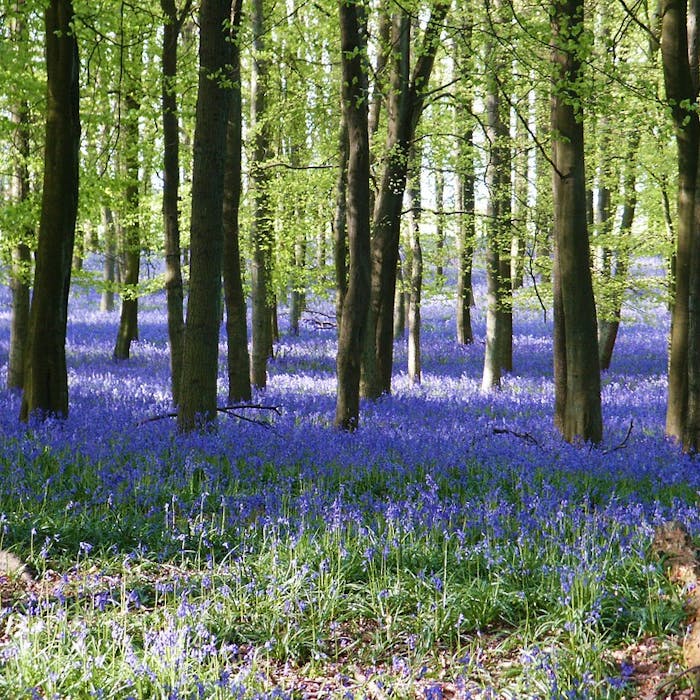
The bluebell - the nation's favourite wildflower
Renowned for the carpeting effect they create in woodlands and fields, bluebells are an iconic British wildflower. They grow in profusion and epitomise one of the most hopeful times of the year - mid-April to late-May. They were voted Britain’s favourite flower in a Plantlife poll in 2002.
Bluebells (Hyacinthoides non-scripta) are native to western Europe, with the UK being a species stronghold. Britain is home to half of the entire world population. They're particularly associated with ancient woodland, and can reach great densities in the UK’s woods, where many thousands of bulbs can exist in one section, creating the incredible blue carpets we fondly associate with spring. They also grow along hedgerows and in fields.
Often dominating the forest floor in their profusion, they create what are affectionately called ‘bluebell woods”. Bluebells flower and leaf early in Spring and do most of their growing before the woodland canopy closes over.
They grow well in old, dense woodland because the thick foliage limits the growth of other competing flora.
The bluebell is a protected species under the Wildlife and Countryside Act (1981). This means digging up the plant or bulb in the countryside is illegal, and landowners are prohibited from removing bluebells from their land to sell.
The native bluebell is threatened by the escape of the Spanish bluebell from gardens, and subsequent cross-breeding and loss of true native populations. During a survey around one in six bluebells found in broad-leaved woodland was a Spanish rather than native variety. Unlike the British bluebells, the Spanish ones have no scent.
Further reading
Links to external websites are not maintained by Bite Sized Britain. They are provided to give users access to additional information. Bite Sized Britain is not responsible for the content of these external websites.
